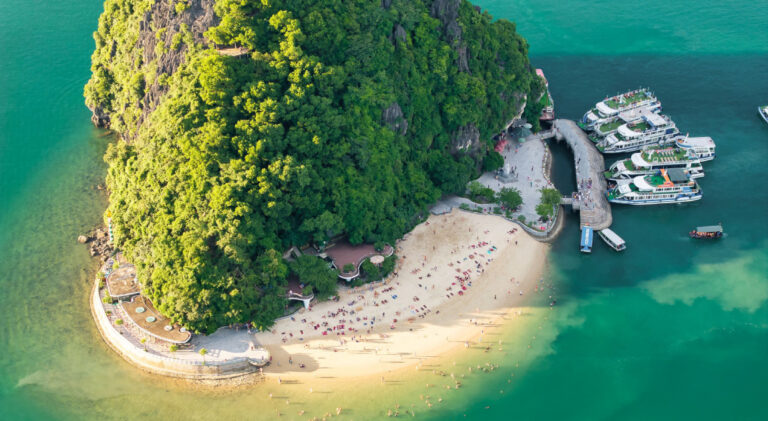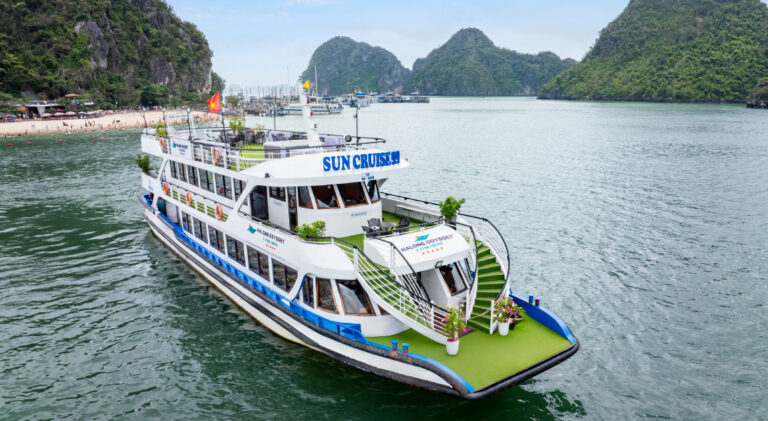Halong Bay is one of the most popular travel destinations in Vietnam and has received countless love and attention from domestic and foreign visitors.
Let’s explore this wonderful Heritage Site in this article!
1. Location
Situated in Quang Ninh Province, Halong Bay is about 165 kilometers from Hanoi City.
The UNESCO-designated Ha Long Bay World Heritage Site spans 434 km and includes 775 islands, 411 of which have been given names. This area, which is bounded by the islands of Dau Go in the west, Dau Be in the south, and Cong Tay in the east, is home to a large number of well-known rocky islands, caverns, and beaches.
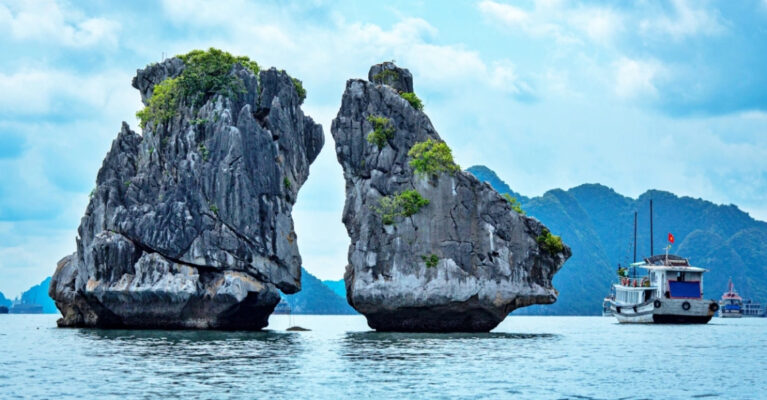
In recent years, Halong Bay has become the number one destination for tourists who travel to Vietnam, thanks to the breathtaking natural beauty and rich local culture.
BOOK YOUR HALONG BAY TOUR WITH US >>
2. The name “Halong Bay”
“Landing dragon” is what the name “Ha Long” implies.
Legends say that, once upon a time, a mother dragon and its children flew down from the sky to aid the Vietnamese people in fending off foreign invaders, and Halong Bay is where they landed. The dragons spewed out countless pearls, which turned into innumerable towering stone islands linked together like a solid wall, blocking the enemy’s ships.
Today, many islands and mountains in Ha Long Bay still bear the name of Dragon (translated to “Rong” or “Long”), such as Mat Rong Island, Cai Rong Harbor, and Bai Tu Long Bay.
3. Climate & weather
Like other regions in Vietnam, Ha Long Bay has a signature tropical climate, divided into 2 main seasons and 2 transitional seasons: spring, summer, autumn, and winter.
Winter in Halong Bay is from November to March next year, with an average temperature of around 15°C to 20°C. This would be ideal for tourists from temperate climate nations to enjoy a cool and pleasant holiday.
In summer, from May to September, Halong Bay has an average temperature of 26°C, with bright sunny days and sporadic shower rains, which makes it ideal for outdoor activities like swimming and kayaking.
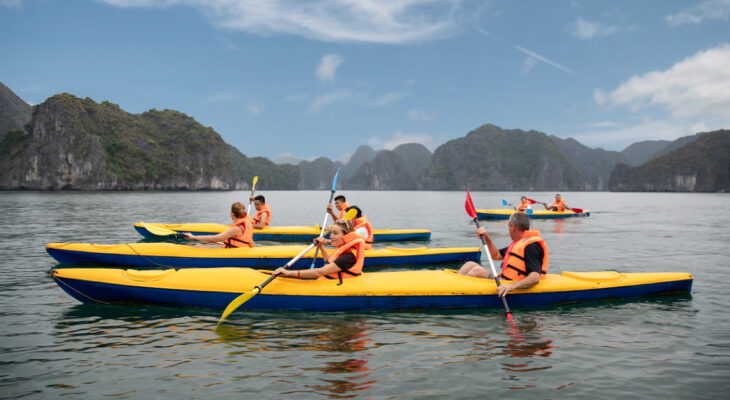
The two transition seasons are spring in April and autumn in October, both of which have chilly and temperate weather. The average temperature during these times is 18°C – 19°C, with constant drizzle in the spring.
4. Outstanding scenery of Halong Bay
Halong Bay’s breathtaking landscape is magical to see from above: the unique shapes of the limestone mountains, the azure sea, sky, water, and clouds are all harmoniously combined. It is an intriguing nature-inspired visual art that no adequate words can express the level of grandeur and elegance.
The islands in Halong Bay boast a lively and attractive beauty, with diverse shapes and sizes. Cruising on Halong Bay’s blue water, you can come across rocky islands resembling fun shapes like chickens, incense holders, dogs… It’s no wonder why Halong Bay is well-loved by all local and international tourists!
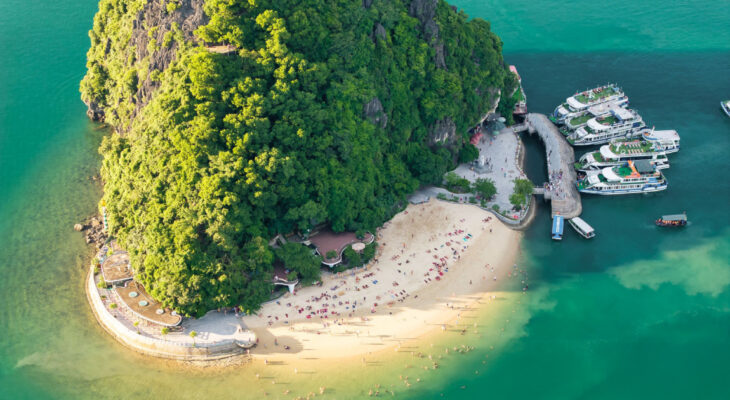
BOOK YOUR HALONG BAY MORNING TOUR WITH US >>
5. Global value in geology – geomorphology
As a mature karst environment in hot, humid tropical circumstances, Ha Long Bay (including its neighboring Lan Ha Bay and Bai Tu Long Bay) has exceptional global geological and geomorphological importance. Halong Bay has thousands of incredibly varied islands that have been repeatedly altered by the sea and tides, either scattered over the bay, standing alone, or grouped in rows.
6. Historical and cultural value
Since the earliest people to live on Ha Long Bay were Soi Nhu, their culture is the first chapter in the bay’s history. Residents of Soi Nhu have developed a distinctive sea culture that is significant to the development of Halong Bay and Vietnamese culture in general through perseverance and inventiveness.
The sea has traditionally played a significant role in the everyday routines and activities of the Ha Long people, and this way of life is still widely followed today. Intangible traditions like classical music and poetry, as well as annual festivals, also help to maintain and advance traditional cultural values.
In recent years, the residents’ lives have been significantly impacted by the area’s explosive rise in tourism. To maintain a portion of Ha Long’s ancient culture, they have managed to integrate old customs into their daily existence.
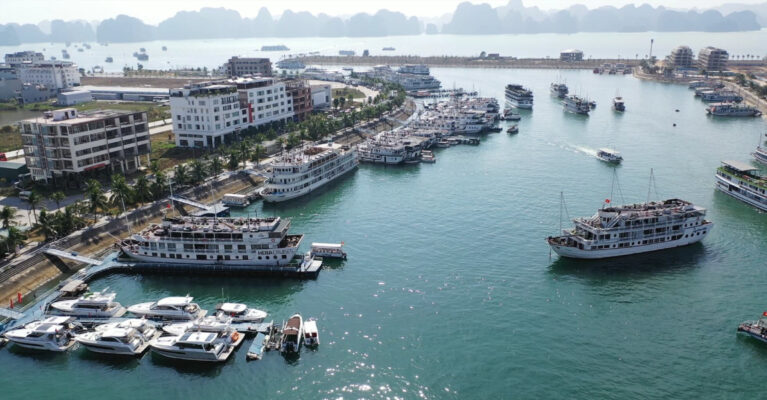
7. The titles of Halong Bay
The United Nations Educational, Scientific, and Cultural Organization (UNESCO) has twice designated Ha Long Bay as a World Natural Heritage Site due to its exceptional values:
The first time: According to criteria vii (contains transcendent natural phenomena or regions of natural beauty and artistic importance), Ha Long Bay was named a World Natural Heritage site with exceptional worldwide aesthetic value by the World Heritage Committee in 1994.
The second time: Ha Long Bay was designated as a World Natural Heritage site in 2000 by the World Heritage Committee, which cited the area’s exceptional worldwide geological and geomorphological significance as a criterion. viii (are excellent illustrations of significant epochs in the planet’s history, such as the emergence of life, significant continuing geological processes in the formation of geomorphology, or seismic and topographic characteristics).
Halong Bay was also included in the preliminary list of the world’s seven natural wonders on December 11, 2011, along with the Amazon Rainforest and Amazon River in Brazil, the Iguazu waterfall in Argentina, Jeju Island in Korea, Komodo Island in Indonesia, and others.
